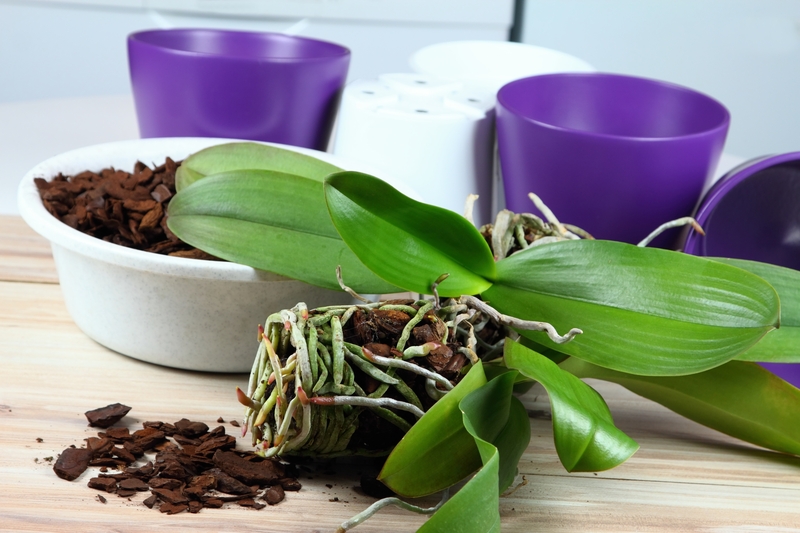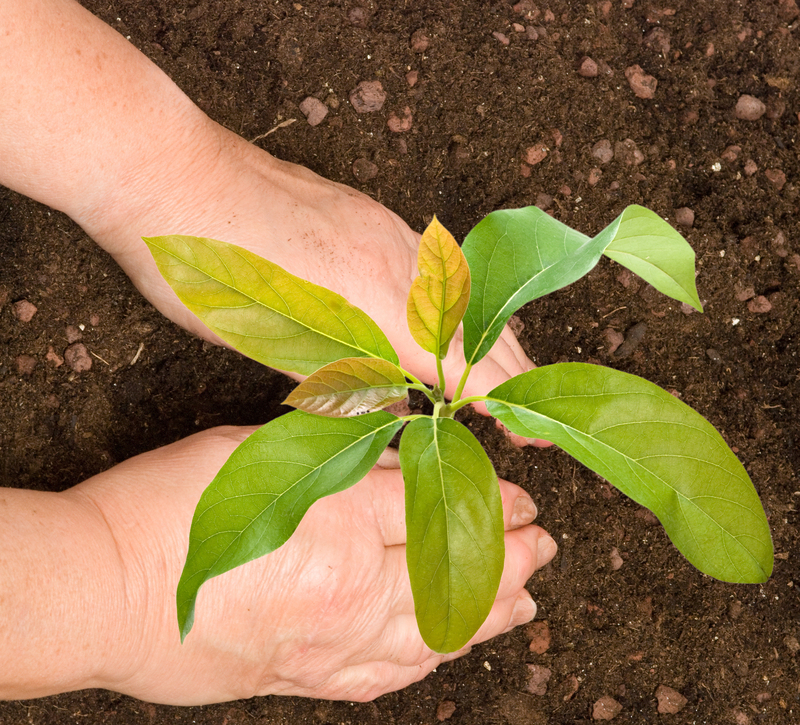The Science and Art of Hedge Trimming Techniques
Posted on 27/09/2025
The Science and Art of Hedge Trimming Techniques
Maintaining beautiful, healthy hedges is an art form deeply rooted in practical science. Whether you're a professional landscaper or a keen gardening enthusiast, understanding the nuance and methods behind hedge trimming will reward you with thriving greenery and striking garden design. In this comprehensive guide, we'll explore effective hedge trimming techniques, the science behind plant response, tool selection, scheduling, and artistic applications.

Understanding Hedge Growth: The Science Behind the Pruning
Before you pick up your shears, it's vital to appreciate how hedges grow. Most hedge plants thrive on periodic cutting, which stimulates new growth and maintains shape. For optimal results in hedge shaping, it is important to know the biology of the plants you're working with.
How Hedges Respond to Trimming
- Apical Dominance: Most woody hedge plants naturally grow upwards, with the central stem (apical bud) suppressing side growth. When trimmed, this dominance is broken, encouraging a denser, bushier hedge as side shoots proliferate.
- Timing and Growth Rate: Fast-growing hedges like privet and laurel need more frequent trimming than slow-growing options such as yew or boxwood. The chemistry of seasonal growth triggers--temperature, daylight, and moisture--play a crucial role here.
- Healing and Shearing: Plants heal best when cut at the correct angle and with sharp tools. Clean cuts reduce disease risk. Respecting this science ensures robust, healthy hedges.
Essential Tools for Expert Hedge Trimming
Equipping yourself with the right hedge trimming tools is half the battle. Each tool serves a unique purpose, from precision to efficiency.
- Hand Shears: Ideal for detail work and shaping--perfect for formal garden designs and topiary.
- Hedge Trimmers (Manual or Electric): Best for large hedges or those requiring uniform cuts. Electric or battery-powered trimmers offer speed and consistency.
- Pruning Saws: Useful for thick branches or neglected hedges that require renovation trimming.
- Loppers: Great for hard-to-reach or dense areas, delivering extra force for branches up to two inches thick.
Tool maintenance is crucial: Always keep blades sharp, clean off sap and debris, and oil moving parts.
Choosing the Right Trimming Technique for Your Hedge
The best hedge trimming techniques depend on several factors:
- Type of plant species
- Desired hedge shape (formal vs informal)
- Growth rate and age of your hedge
- Intended function (privacy, boundary, ornamental, or wildlife habitat)
Fundamental Hedge Trimming Methods
1. Regular Shaping Cuts
Shaping involves removing new growth for neat, defined lines. This encourages dense foliage and keeps formal hedges looking immaculate. For the creation of formal hedges and topiarized forms, precise trimming is performed several times during the growing season. Use a guideline (string or laser level) to ensure flat tops and straight sides.
2. Maintenance Pruning
Maintenance pruning involves removing damaged, diseased, or unwanted branches. This keeps the hedge healthy and controls its size. Targeted snipping allows sun and air into the core, preventing fungal problems and die-back.
3. Rejuvenation Pruning
This intensive technique gives old, overgrown, or neglected hedges a new lease of life. Cut hard into the old wood in late winter or early spring, prompting new shoots to develop from the base. Not all hedge types tolerate hard pruning, so research your species first.
4. Artistic and Topiary Trimming
Topiary elevates hedge trimming to a living art. Shapes range from classic spheres and cones to elaborate animals or abstract forms. Artistic pruning demands patience and a steady hand but results in stunning, one-of-a-kind garden centerpieces. Clippers, hand shears, and custom guiding frames help achieve intricate designs.
Best Practices for Hedge Trimming Technique
1. Start from the Bottom
Always begin trimming at the base of the hedge, working upward. This technique prevents cuttings from falling into untrimmed sections and ensures a uniform finish.
2. Maintain a Tapered Profile
For most hedges, especially formal screens, create a subtle "A" shape, with the base wider than the top. This allows sunlight to reach lower branches, promoting lush, even growth throughout.
3. Angle Your Cuts
Hold shears or trimmer blades parallel to the hedge surface. For rounded forms, always trim in the same direction for continuity. Use smooth, sweeping motions to avoid jagged branches.
4. Step Back and View Your Work
Periodically step back to check the hedge's shape and symmetry. Adjust as needed before continuing for professional-level results.
5. Clean Up as You Go
Regularly remove trimmings from the hedge. This prevents disease and allows you to spot missed areas, ensuring a tidy, well-manicured result.
Seasonal Timing: When and How Often to Trim Hedges
Optimal hedge trimming frequency and timing depend on plant species and local climate. However, some general guidelines can help you schedule year-round maintenance:
- Formal evergreen hedges: Trim 2-3 times a growing season, typically in late spring, midsummer, and early autumn.
- Informal flowering hedges: Prune immediately after flowering to preserve next season's blooms.
- Deciduous hedges: Best cut in late winter or early spring while dormant; avoid heavy cuts in late summer to prevent frost damage to new growth.
- Rejuvenation pruning: Carry out in winter or early spring before sap rises.
Avoid trimming during extreme heat or drought, as tender cuts are prone to sun-scorching or desiccation.
Common Hedge Trimming Mistakes and How to Avoid Them
Even experienced gardeners can make errors that compromise plant health or aesthetics. Steer clear of these common pitfalls:
- Cutting at the wrong time: Pruning too late or early can remove flower buds or expose shoots to frost damage.
- Flat or vertical sides: A vertical face shades lower growth, leading to legginess. Always taper the hedge sides.
- Neglecting tool maintenance: Dull blades tear instead of slice, raising disease risk and harming hedge appearance.
- Heavy-handedness: Removal of too much foliage shocks the plant, leading to sparse regrowth or death.
The Artistic Side: Creating Unique Garden Designs with Hedges
The art of hedge trimming extends far beyond simple garden maintenance. Hedges frame spaces, define paths, and serve as striking backdrops for blooms. Skilled trimmers can create living sculptures and geometric patterns that accentuate any landscape.
Popular Hedge Design Styles
- Formal hedging: Crisp lines, flat tops, and symmetrical curves for a classic, refined look.
- Cloud pruning: Japanese-inspired, softly rounded shapes that evoke a dreamy atmosphere.
- Living walls: Tall, densely clipped hedges that offer privacy and contemporary structure.
- Topiary forms: Abstract or representational, these require meticulous, regular attention to maintain their shape.
Tip: Use templates or wire frames as guides if you're new to topiary or want precise repetition of forms throughout a garden.
Environmental Considerations and Hedge Wildlife
Hedges are vital wildlife habitats, offering shelter, food, and nesting sites for birds, insects, and small mammals. When practicing hedge trimming, always check for active bird nests during the breeding season (typically March-August in many regions). Delay cutting if any are found.
Choose mixed native species for wildlife-friendly hedges, and allow some sections to flower or fruit by reducing trimming frequency in select areas. This increases plant diversity, ecological resilience, and visual interest.

Advanced Science: Plant Physiology and Recovery after Trimming
Expert hedge trimmers must understand how plants heal and grow after cutting. Photosynthesis is maximized with abundant leafy surface area. Excessive removal can starve plants of energy, leading to dieback or vulnerability to pests and pathogens. Ensure you never remove more than one-third of foliage at one time, particularly on young or weak hedges.
Aftercare is essential. Water deeply and consider a seasonal feeding with a balanced (10-10-10) fertilizer after heavy trimming to aid vigorous regrowth. Mulch at the base to retain moisture and suppress weeds.
Conclusion: Mastering the Science and Art of Hedge Trimming
The science and art of hedge trimming techniques blend horticultural knowledge with skilled craftsmanship. By understanding plant biology, selecting the right tools, following proven trimming methods, and appreciating the creative possibilities, you'll cultivate hedges that are not only healthy and robust but also visually stunning.
Whether your goal is a formal evergreen boundary or a whimsical topiary creation, the key to success lies in regular care, knowledge, and a keen eye for detail. The result? Living garden structures that enhance property value, ecological health, and year-round beauty.
- Regularly apply correct hedge trimming techniques for lush, even, and healthy growth.
- Experiment with artistic designs for personalizing your outdoor space.
- Respect seasonal and ecological guidelines to maintain plant vitality and benefit wildlife.
Embrace the science and art of hedge trimming--and let your landscape become a living masterpiece.

